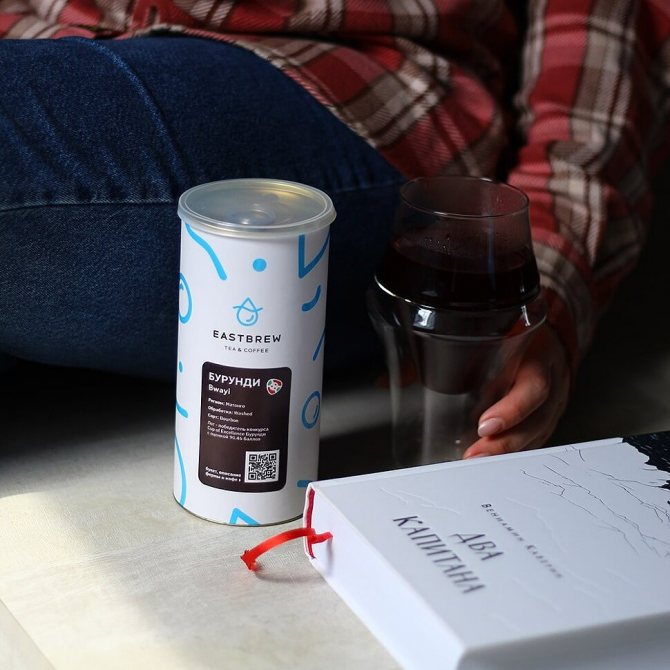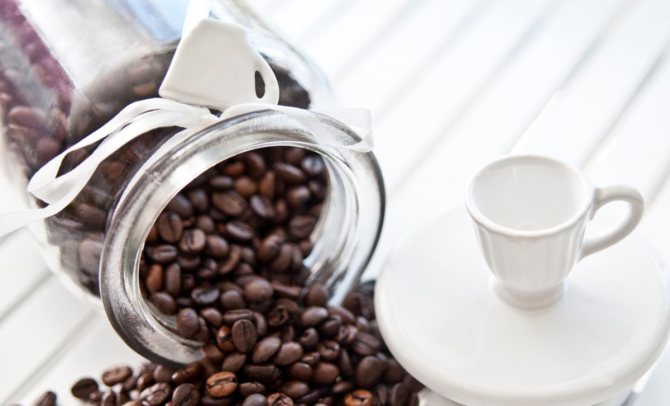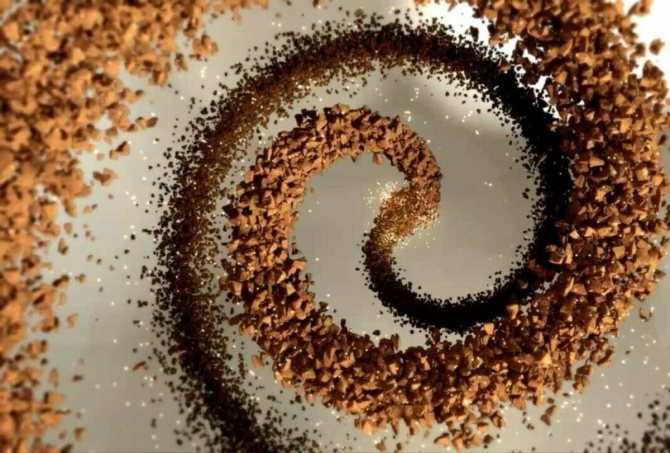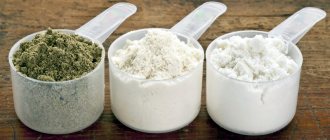Shelf life of unroasted beans
Choosing unroasted coffee beans has several benefits:
- Price. Raw beans are much cheaper than roasted ones, which is a definite plus for coffee lovers.
- Long shelf life. Raw beans can be purchased in large quantities, and they will remain suitable for making coffee drinks for a long time.
How long do coffee beans last? On average, unroasted coffee beans can be stored for one to three years.
Shelf life of coffee beans in vacuum packaging. If unprocessed grains were stored in vacuum packaging, their shelf life can reach five years.
How to determine the packaging date of unroasted coffee:
- Usually, when buying beans in large bags, you can find a sticker on them with the exact date of packaging. If the date cannot be determined, you need to pay attention to the appearance of the coffee beans, thanks to which you can determine the shelf life of the product:
- Fresh coffee beans have a uniform greenish tint; the characteristic depression should be even. They should be quite dense and the grain should not crumble when bitten. Fresh coffee beans have a light green tea aroma.
- You should not buy grains that have different shades and differ in size from each other. This means that this bag contains different types of coffee, coffee from different years of harvest. Garbage may indicate poor quality coffee beans.
- Old grains are odorless and appear dry. You should refuse such a purchase, as they lose their taste.
What kind of coffee can be stored for a long period
For a long-term supply, you should give preference when purchasing green beans.
If you plan to store coffee for a long time, and you need to purchase quite a large amount, then raw green beans will be the best option. Their undoubted advantage is their low cost compared to roasted and ground grains. In addition, they are the least demanding on storage conditions, since the aromatic substances are securely contained inside. In this regard, the main requirement is a constant temperature not exceeding 20 degrees. Optimal humidity is also necessary, otherwise the grains will become damp and begin to mold.
An excellent place for storage would be a kitchen cabinet or niche away from heating appliances in bright sunlight.
If the bag of grains is quite voluminous, you should cut its corner without damaging the rest of the package. Having poured the required amount, the cut must be tightly twisted and secured, for example, with a paper clip.
The convenience of buying a large supply of raw coffee beans is that you have a fresh drink at hand at any time: you just need to roast and grind a small handful of beans. At the same time, the coffee will have a deep taste and rich aroma, because the time between heat treatment and brewing of the drink is minimal.
Shelf life of roasted coffee beans
Storing finished coffee beans is very different from storing green beans.
And to extend the shelf life of coffee, you need to follow special rules. Let's consider the dependence of the shelf life on the packaging of coffee beans:
- Unsealed packaging - this can be a box or a regular plastic bag. Coffee can be stored in this packaging for no more than two weeks.
- Sealed paper bags are one of the most popular ways to store coffee. In a paper bag, coffee beans can retain their flavor for six months.
- Heat sealable bags. This packaging method is the best for long-term storage of coffee. These bags have a gas vent valve that creates a vacuum and prevents the grains from spoiling.
Factors influencing the rate of grain aging
~ 16 minutes to read ~
Translation of the article SCA (Specialty Coffee Association) by Emma Sage
Coffee is known in the food industry as a stable product that, once roasted, does not deteriorate due to enzymatic or microbial processes (Illy and Viani 2005; Nicoli et al. 1993; Anese et al. 2006). However, in the specialty coffee industry we recognize the importance of the chemical reactions and physical changes that occur after roasting (Nicoli et al. 2009). Some of these changes are responsible for the aging of the grain and the resulting noticeable defective taste, which increases over time and affects the quality of the prepared drink.
Accurately determining the properties, quality and rate of aging of a bean is inherently challenging, both due to the variety of flavors prevalent within the bean itself and the ephemeral nature of roasted coffee. The American Coffee Association (SCA) Water Quality Guide states that “the flavor potential of coffee is constantly changing. As a result, coffee must be treated as a variable when performing chemical or sensory analysis” (Beeman et al. 2011). This concept addresses an existing scientific problem directly related to grain aging. The chemical and physical changes that occur in coffee after roasting make experimental control, experimental repeatability, and data analysis nearly impossible. However, this did not prevent a large group of researchers from tackling this problem.

Common Causes of Coffee Aging
Roasting is ultimately responsible for most of the reactions associated with the aging process of coffee, as it produces volatiles and pressurizes the coffee beans due to internal gas accumulation (Nicoli et al. 2009). Many complex chemical reactions and physical changes occur during roasting, some of which play a key role in the subsequent preparation of the drink. As the beans are heated in the roaster, sugars and amino acids are reduced and more and more carbon dioxide is produced through Strecker decomposition, which subsequently releases carbon dioxide. At the same time, a physical change occurs in the coffee in which the mass of the beans decreases and the porosity increases, resulting in a higher rate of diffusion of the potential volatile compound (Labuza et al., 2001). At the same time, the Maillard reaction produces compounds that are chemically similar to oxygen and subsequently promote lipid oxidation (Nicoli et al. 1993).
The loss of carbon dioxide in coffee beans occurs due to diffusion forces that move molecules due to differences in pressure and/or concentration gradients of the molecules. As coffee is ground, porosity and surface-to-volume ratio increase, accelerating degassing and deposit formation. A team of researchers discovered that the loss of several specific volatile compounds results in the loss of much of the coffee's aroma. The first study to suggest this found that methanethiol and 2-methylpropanal produced the most intense aroma notes and dissipated two hours after roasting, and that after eight days of storage, methanethiol was reduced to approximately 30% of its original amount (Holscher and Steinhart 1992). Czerny and Scieberle (2001) and Sanz et al. (2001) also report these compounds as key molecules lost during grain aging.
According to recent studies, after 8 days of storage, the content of methantinol in the bean (the main component responsible for the rich aroma of coffee) is reduced to 30%.
New research in this area has also focused on the ratios of certain compounds such as 2-methylfuran/2-butanone, 2-furfurylthiol/hexanal (Marin et al. 2008). However, any of the above compounds or ratios are only indicators of a broader group of aging-related responses that have not yet been characterized (Nicoli et al. 2009).
One of the characteristic aromas of aging grain husks is rancidity, which results from lipid decomposition, chemical oxidation or pyrolysis of fats and chemically similar compounds (Smith et al. 2004; Vila et al. 2005). In roasted Arabica beans, lipids make up only about 15% of the dry weight of the bean (Illy and Viani 2005), but they significantly influence the flavor of aged coffee. This process is accelerated by humidity (Smith et al. 2004), oxygen temperature (Vila et al. 2005) (Nicoli et al. 1993; Huynh-Ba et al. 2001) and correlates with ground coffee surface area (Vila et al. 2005) . However, it is also known that even coffee stored under vacuum or low oxygen can be subject to lipid oxidation due to the presence of free radicals in the coffee generated during the roasting process.
The rate of all these changes and therefore the overall shelf life of coffee depends on the condition of the coffee (whole beans vs. ground beans) and storage conditions such as temperature, humidity and, most importantly, the presence of oxygen (Nicoli et al. 1993; Illy and Viani 2005; Radtke-Granzer and Piringer 1981).
Rules for storing coffee beans
- You can store roasted beans in foil bags - this way they will retain their properties longer.
- If you purchase raw coffee beans, you can roast them and store them in an opaque jar with a tight lid. It is better to choose ceramic dishes and never use iron or plastic, because... iron (plastic) will only degrade the quality of the coffee beans.
- To better preserve the coffee beans, you can wrap them in foil or baking paper and then put them in a box or paper bag.
- Coffee should be stored in a dark, dry place so that the beans are not exposed to air and light.
Can coffee be stored in the refrigerator?
You cannot store coffee beans in the refrigerator. It contains a huge amount of foreign odors that negatively affect the taste and aroma of coffee. Temperature changes also destroy the beneficial properties of coffee, which is why it is best to store coffee beans in a dry cabinet.
How to properly store coffee at home
Truly delicious coffee can only be prepared from selected high-quality beans. The variety, blending, roasting, and most importantly, proper storage are important here. Compliance with certain conditions is the key to preserving the taste and aroma of this invigorating black drink.
Grains in a glass jar

The best place to store coffee beans will be a hanging kitchen cabinet. Ideally, it is completely closed and made of natural material. An important condition is that the shelf with coffee beans should be located at least 4-5 meters from heating devices and at least a meter from the floor. The “neighbors” of the grains will also have to choose calm ones - it is better if they are cereals or pasta. But it’s better to keep the spices away, otherwise the beans will absorb the aromas of the spices.
After opening the package, the grains should be poured into a glass jar with a tight-fitting lid; darkened glass would be best. But after being in a tin or metal can, the coffee will have a metallic taste.
Ground
After grinding, coffee becomes more demanding on storage conditions, so the rules are somewhat specific. Although the general recommendations coincide with the grain version.
If you don’t have a vacuum sealer at home that allows you to extract air from a bag of coffee, then the best option would be to store it in the original pack.
It protects the powder from exposure to light, moisture and foreign odors. In addition, it is created in such a way that condensation does not form inside and the coffee does not become damp. If the opened package does not have a reusable lock, it is necessary to release as much air as possible and tightly twist the edge of the package, securing it with a special clip or a regular stationery clip.
Soluble in tin packaging

The main enemies of the instant drink are dampness and temperature changes. Because of them, the product will quickly gather in lumps and lose the aromatic substances remaining after processing in production. Dry air and a dark place will preserve the taste characteristics of instant coffee.
If you need to store an open pack for a long time, it is better to wrap it in foil, and in the case of a jar, place a piece of foil between the lid and the container itself. If for some reason the package is opened and the coffee has lost its aroma, you can put a cinnamon stick inside and close the bag tightly, after a few days the coffee will again have the same smell as before.
Is it possible to drink expired coffee beans?
If you find a stale pack of unroasted coffee beans, you can roast them and make coffee drinks from them.
Such coffee will not cause any harm to humans, but it loses its bright taste and aroma. Despite this, unroasted coffee beans retain their invigorating properties.
There are two ways to improve the flavor profile of raw coffee beans:
- You can roast the grains heavily, so the remaining essential oils will impart their aroma to the drink.
- During roasting, you can add various spices to the grains, such as cloves or cinnamon. This will help saturate the grains with a pleasant aroma.
Roasted coffee beans
Roasted coffee completely loses its taste and has no aroma.
If the beans have spoiled, they have a very dark color, an oily film, there is no coffee aroma, and there may even be an unpleasant, bitter smell.
It is extremely difficult to restore the properties of roasted coffee beans, so it is better to throw them away. Non-drinkable coffee beans can be used for interior decoration or used as a body and face scrub.
Recommendations for storing in the refrigerator and freezer
The freezer is one of the possible places to store coffee beans. They can be either raw or fried. Moreover, in the second case, freezing should be “shock” and carried out immediately after heat treatment.
One of the options for long-term storage is the freezer
It is not worth storing a large number of grains in one package at once. In this case, every time you want to drink a cup of coffee, you will have to remove the beans from the cold and keep them warm for a while, then return them back to the freezer shelf. Such temperature changes will turn the grains into a tasteless and odorless product within a couple of months.
It is better to package them in small portions and defrost as needed. It is very important, after the grains are warm, to allow them to thaw on their own: you should not heat them in the microwave or place them near heating appliances. Grinding half-frozen beans is also not a good idea. The optimal temperature for grains ready for further processing and grinding is 15 degrees.
It is better to freeze in small portions; before grinding the grains, you need to defrost them completely.
Even in a frozen state, grains are extremely susceptible to odors, so products with a strong odor, such as fish, meat, seafood, etc., should be kept as far away as possible, otherwise an off-flavor in the finished drink cannot be avoided.











